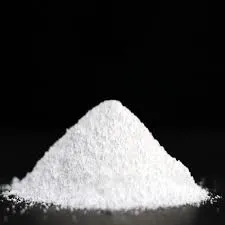What Chemical is Used for Water Treatment?
Water treatment is an essential process designed to make water safe for human consumption, agricultural use, and industrial applications. The purity of water is critical, as it is a vital resource for life and plays a significant role in maintaining public health and environmental quality. Various chemicals are employed in water treatment processes to eliminate contaminants, improve water quality, and ensure its safety. This article explores the primary chemicals used in water treatment and their specific roles in the purification process.
Chlorine
One of the most widely used chemicals in water treatment is chlorine. Renowned for its disinfecting properties, chlorine is effective against bacteria, viruses, and other microorganisms that can cause disease. When chlorine is added to water, it forms hypochlorous acid, which penetrates the cell walls of pathogens and destroys them. This process not only eliminates harmful organisms but also provides residual disinfection, ensuring that the water remains safe as it travels through the distribution system. However, while chlorine is effective, it can form undesirable byproducts, known as trihalomethanes (THMs), when it reacts with organic matter present in water. To mitigate this, water treatment facilities often use alternative methods such as chloramination, which combines chlorine with ammonia, reducing the formation of THMs.
Ozone
Ozone is another potent chemical used in the water treatment process, particularly for its strong oxidizing properties. Ozone can effectively remove organic and inorganic contaminants, including taste and odor compounds, heavy metals, and microorganisms. Unlike chlorine, ozone does not leave a residual taste or odor in water, making it an excellent choice for treating drinking water. However, the challenge with ozone lies in its unstable nature; it must be generated on-site and consumed rapidly, which can complicate large-scale water treatment operations. Despite this, its ability to enhance water quality has led to its increasing use in various water treatment facilities.
Calcium Hypochlorite
what chemical is used for water treatment

Calcium hypochlorite is another important chemical for water treatment, mainly used in swimming pools and potable water disinfection. This compound releases chlorine when dissolved in water, making it a practical choice for maintaining sanitation in aquatic environments. Its stability allows it to be stored for extended periods, providing flexibility for treatment facilities to manage their chlorine needs effectively. Calcium hypochlorite is also beneficial in emergency situations where rapid disinfection of water is necessary.
Coagulants
Coagulants play a crucial role in the physical treatment of water, particularly in removing suspended solids and turbidity. Chemicals like aluminum sulfate (alum) and ferric chloride are commonly used coagulants. These substances work by neutralizing the charges of suspended particles, allowing them to clump together and form larger aggregates, known as flocs. Once flocculated, these particles can be more easily removed through sedimentation or filtration processes. The effective use of coagulants significantly enhances the clarity and quality of drinking water.
pH Adjusters
Another essential class of chemicals used in water treatment is pH adjusters. Maintaining the correct pH in water is important for both the effectiveness of disinfection processes and for preventing corrosion in distribution systems. Common pH adjusters include sodium hydroxide (to raise pH) and sulfuric acid (to lower pH). Adjusting pH not only helps in maximizing the efficiency of disinfectants like chlorine and ozone but also protects infrastructure and ensures compliance with regulatory standards.
Conclusion
In summary, the treatment of water involves a complex interplay of various chemicals, each serving a unique purpose in enhancing the safety and quality of water. Chlorine, ozone, calcium hypochlorite, coagulants, and pH adjusters are among the most commonly used chemicals in water treatment processes. By understanding the roles of these chemicals, we can appreciate the intricacies involved in ensuring that the water we consume is clean, safe, and of high quality. As advancing technologies and regulations evolve, the water treatment industry continues to explore new methods and materials to improve water safety, safeguarding public health and the environment for future generations.

